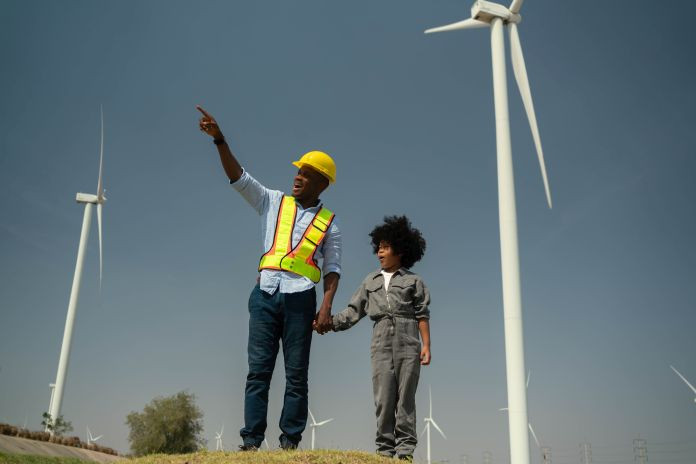– Global energy access gap persists: 675 million people without electricity, 2.3 billion people reliant on harmful cooking fuels
USA / SWITZERLAND / UAE – A new report by the International Energy Agency (IEA), the International Renewable Energy Agency (IRENA), the United Nations Statistics Division (UNSD), the World Bank, and the World Health Organization (WHO), released today, finds that the world is not on track to achieve the Sustainable Development Goal (SDG) 7 for energy by 2030.
This year marks the halfway point for achieving SDGs by 2030. SDG 7 is to ensure access to affordable, reliable, sustainable and modern energy. The goal includes reaching universal access to electricity and clean cooking, doubling historic levels of efficiency improvements, and substantially increasing the share of renewables in the global energy mix. Attaining this goal will have a deep impact on people’s health and well-being, helping to protect them from environmental and social risks such as air pollution, and expanding access to primary health care and services.
The 2023 edition of Tracking SDG 7: The Energy Progress Report warns that current efforts are not enough to achieve the SDG 7 on time. There has been some progress on specific elements of the SDG 7 agenda – for example, the increased rate of using renewables in the power sector – but progress is insufficient to reach the targets set forth in the SDGs.
The global energy crisis is expected to stimulate the deployment of renewables and improve energy efficiency with several government policies pointing to increasing investment. However, IRENA estimates show that international public financial flows in support of clean energy in low- and middle-income countries have been decreasing since before the COVID-19 pandemic and funding is limited to a small number of countries. To meet SDG 7 targets and to ensure that people fully benefit from the socio-economic gains of the shift to sustainable energy, it is necessary to structurally reform international public finance and define new opportunities to unlock investments.
The report also finds that mounting debt and rising energy prices are worsening the outlook for reaching universal access to clean cooking and electricity. Current projections estimate that 1.9 billion people will be without clean cooking and 660 million without electricity access in 2030 if we do not take further action and continue with current efforts.
These gaps will negatively impact the health of our most vulnerable populations and accelerate climate change. According to WHO, 3.2 million people die each year from illness caused by the use of polluting fuels and technologies, which increase exposure to toxic levels of household air pollution.
Key findings of the report
In 2010, 84 percent of the world’s population had access to electricity. This increased to 91 percent in 2021, meaning more than a billion people gained access over that period. However, the growth pace of access slowed in 2019–2021 compared to previous years. Rural electrification efforts contributed to this progress, but a large gap within urban areas remains.
In 2021, 567 million people in sub-Saharan Africa did not have access to electricity, accounting for more than 80% of the global population without access. The access deficit in the region stayed almost the same as in 2010.
The world remains off track to achieve universal access to clean cooking by 2030. Up to 2.3 billion people still use polluting fuels and technologies for cooking, largely in sub-Saharan Africa and Asia. The use of traditional biomass also means households spend up to 40 hours a week gathering firewood and cooking, which prohibits women from pursuing employment or participating in local decision-making bodies and children from going to school.
According to the 2019 WHO estimates, 3.2 million premature deaths each year were attributable to household air pollution created by using polluting fuels and technologies for cooking.
Renewable electricity use in global consumption has grown from 26.3 percent in 2019 to 28.2 percent in 2020, the largest single-year increase since the start of tracking progress for the SDGs.
Efforts to increase renewables’ share in heating and transport, which represent more than three-quarters of global energy consumption, remain off target to achieve 1.5oC climate objectives.
Energy intensity – the measure of how much energy the global economy uses per dollar of GDP – improved from 2010–2020 by 1.8 percent annually. This is higher than the 1.2 percent improvement from the previous decades.
However, the rate of energy intensity improvement has slowed in recent years and dropped to 0.6 percent in 2020. This makes it the worst year for energy intensity improvement since the global financial crisis, albeit largely due to pandemic-related restrictions, which may indicate only a temporary setback. Annual improvements through 2030 must now average 3.4 percent to meet the SDG target 7.3.
International public financial flows in support of clean energy in developing countries stand at US$ 10.8 billion in 2021, 35 percent less than the 2010–2019 average and only about 40 percent of the 2017 peak of US$ 26.4 billion. In 2021, 19 countries received 80 percent of the commitments.
The report will be presented to top decision-makers at a special launch event on 11 July 2023 at the High-Level Political Forum (HLPF) on Sustainable Development, ahead of the second SDG Summit in September 2023 in New York.
The authors urge the international community and policymakers to safeguard the gains made toward achieving SDG 7, to advance structural reforms, and to maintain a strategic focus on the vulnerable countries needing the most support.





